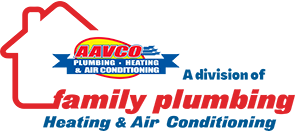Introduction
At a time when energy efficiency is paramount, optimizing your HVAC (heating, ventilation, and air conditioning) system can lead to significant energy savings and environmental benefits. By implementing simple yet effective strategies, you can enhance the efficiency of your HVAC system, reduce energy consumption, and lower your utility bills. In this article, we will explore 11 proven ways to improve the energy efficiency of your HVAC system. Let’s dive in and unlock the secrets to maximizing your comfort while minimizing energy waste.
1. Optimal Thermostat Settings
Setting your thermostat at the right temperature is key to achieving energy efficiency. During warmer months, keep your thermostat at 78 degrees Fahrenheit (25.5 degrees Celsius) or higher when you’re at home, and raise it further when you’re away. In colder months, set it at 68 degrees Fahrenheit (20 degrees Celsius) or lower. Programmable or smart thermostats can automate temperature adjustments based on your schedule and preferences.
2. Regular HVAC System Maintenance
Routine maintenance is essential to keep your HVAC system running smoothly and efficiently. Schedule professional inspections and tune-ups at least once a year. This ensures that all components are clean, properly lubricated, and in optimal working condition. Regular maintenance can prevent inefficiencies, extend the lifespan of your system, and reduce the risk of breakdowns.
3. Clean and Replace Air Filters
Clean air filters are vital for proper airflow and system performance. Check your HVAC system’s air filters every month and replace them as needed, typically every three months. Clogged filters restrict airflow, causing your system to work harder and consume more energy. Clean filters promote better indoor air quality and optimize energy efficiency.
4. Seal Air Leaks and Insulate
Prevent air leakage and heat transfer by sealing gaps around windows, doors, and ductwork. Use weatherstripping, caulk, or insulation to seal these areas and improve your home’s overall insulation. By reducing drafts and heat loss, you can enhance the efficiency of your HVAC system and maintain a comfortable indoor environment.
5. Upgrade to Energy-Efficient Equipment
Consider upgrading your HVAC system to energy-efficient models that meet current standards. Look for systems with high SEER (Seasonal Energy Efficiency Ratio) ratings for air conditioners and AFUE (Annual Fuel Utilization Efficiency) ratings for furnaces. Energy-efficient equipment consumes less energy, operates more quietly, and reduces your carbon footprint.
6. Utilize Ceiling Fans
Ceiling fans can supplement your HVAC system by improving air circulation and creating a cooling breeze. In warmer months, run your ceiling fans counterclockwise to create a wind-chill effect, allowing you to raise the thermostat temperature while maintaining comfort. Remember to turn off fans when you leave the room to save energy.
7. Manage Sunlight and Shade
Control sunlight entering your home by using blinds, curtains, or window films. During hot summer days, close curtains or blinds on south- and west-facing windows to reduce heat gain. In colder months, open them during the day to allow sunlight to naturally warm your home. By managing sunlight and shade, you can reduce the load on your HVAC system.
8. Implement Zoning Systems
Zoning systems divide your home into different areas or zones, allowing you to independently control temperatures in each zone. Always remember the proven ways to improve the energy efficiency of your HVAC system.
For more information go to https://aavcoservices.com/

